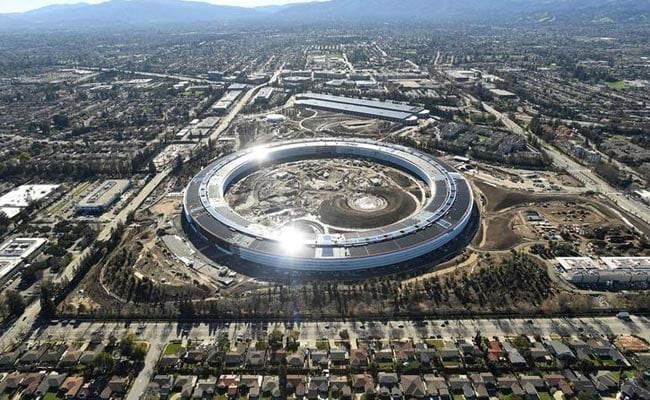At Apple's New Headquarters, Price Is No Object
Advertisement

Do you remember the NeXT computer, the one Steve Jobs began building in 1985 after he was booted from Apple by then-Chief Executive John Sculley and the board?
It was supposed to be a machine built for academia, the ultimate learning tool priced so that universities could buy them in bulk. But, Jobs being Jobs, he had particular ideas about what it should look like and how it should be made.
It had to be a perfect cube, which created manufacturing complications. The screws inside the computer required expensive plating. His engineers designed custom chips instead of using off-the-shelf semiconductors. He built a futuristic factory to manufacture the computer, which included, as Walter Isaacson recounts in his biography of Jobs, "$20,000 black leather chairs and a custom-made staircase, just as in the corporate headquarters."
The result was exactly what you'd expect: a beautiful machine that colleges couldn't possibly afford. Jobs's higher education advisers had told him the cost needed to be $2,000 to $3,000. When it was launched in October 1988, all the bells and whistles brought the price to $6,500. I thought of the NeXT computer when I read in the New York Times recently that Apple's new headquarters building in Cupertino, California - its official name is Apple Park; unofficially it's "the spaceship" - cost an astonishing $5 billion. That makes it the world's third most expensive modern building at the time of completion (after the Abraj Al Bait, a skyscraper hotel complex in Mecca, and the Marina Bay Sands, a casino and entertainment center in Singapore).
Advertisement
A Google search unearthed the news that when the complex was originally designed in 2011, it was supposed to cost a little under $3 billion. That would have made it more expensive than the headquarters of Goldman Sachs, which was built in 2009 for $2.1 billion, but less than the rebuilt World Trade Center, at $3.9 billion.
And while Apple was said to be looking for ways to cut costs before construction began, that clearly didn't happen. Why? For the same reason that the NeXT computer cost $6,500: because Jobs, whose design ideas were central to Apple Park, insisted on aesthetic touches that would make the building a) unique and beautiful and b) more costly.
Advertisement
In mid-May, Steven Levy of Wired got an early look at Apple Park and noted some of these Jobsian touches. "The stone for the exterior of the Fitness and Wellness center was sourced from a quarry in Kansas, and then distressed, like a pair of jeans, to make it look like the stone at Jobs's favorite hotel in Yosemite," one caption noted. Another explained, "For workers who want to take the cafe's pizza back to their pods, Apple created (and patented) a container that lets air and moisture escape so the crust won't get soggy."
According to one of the architects, when Jobs talked about the material for the walls "he knew exactly what kind of timber he wanted, but not just 'I like oak' or 'I like maple.' He knew it had to be quarter-cut. It had to be cut in the winter, ideally in January, to have the least amount of sap and sugar content."
Advertisement
The staircases are "a lightweight concrete that achieves the perfect white, and they have unusual banisters that seem carved from the wall alongside the stairs," Levy reported.
The sliding glass doors for the cafe are 85 feet by 54 feet.
And so on.
Could Apple afford a $5 billion headquarters? Of course. As of early May, the company had more than $250 billion in cash on hand. And although it's certainly true that building an extravagant headquarters can sometimes mark the moment that a company peaks, in a pride-cometh-before-the-fall kind of way - am I right, Theranos? - I hesitate to suggest such a fate for Apple. I thought Jobs's death would mark Apple's top, and the company has added, oh, only about $400 billion in market cap since then.
What Apple Park suggests, though, is that the company hasn't yet moved beyond its founder. That has both upside and downside.
"Could we have cut corners here and there?" Cook said to Levy. "It wouldn't have been Apple. And it wouldn't have sent the message to everybody working here that detail matters, that care matters."
But it also sends a message that money is no object, that every design whim can be indulged, even if it drives the cost up, and that the Steve Jobs way remains the only way.
Still and all, let's congratulate Apple on its new headquarters. I'm sure it's worth every penny.
© 2017 Bloomberg L.P.
For the latest tech news and reviews, follow Gadgets 360 on X, Facebook, WhatsApp, Threads and Google News. For the latest videos on gadgets and tech, subscribe to our YouTube channel. If you want to know everything about top influencers, follow our in-house Who'sThat360 on Instagram and YouTube.
Further reading:
Apple
Advertisement
